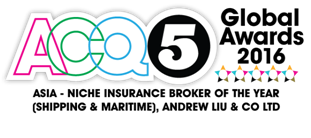LIQUEFACTION OF FLUORSPAR CARGOES FROM CHINA
The American Club has recently become aware of liquefaction problems attending the shipment of certain cargoes of fluorspar loaded in China.
It would appear that shippers are in some cases only providing details as to cargo moisture content and not, as they should, information on the transport moisture limit (TML) and/ or the flow moisture limit (FML) of relevant cargoes. Accordingly, Members fixing cargoes of fluorspar from Chinese ports (including, of course, Hong Kong) are urged to exercise caution and, specifically, to fully familiarize themselves with relevant sections of the IMO Code of Safe Practices for Solid Bulk Cargoes (the BC Code) before agreeing to load this commodity.
In particular, Members should ensure that laboratory test results on cargo moisture content, TML and FML are available prior to issuing relevant bills of lading. Moreover, these test results should be based on samplings taken at different stages of loading rather than a single point thereof.
The parts of the BC Code dealing with cargoes prone to liquefaction are Section 7 (Cargoes which may liquefy), Section 8 (Cargoes which may liquefy: test procedures) and Appendix A (List of bulk materials which may liquefy). As is generally known, mineral cargoes which contain moisture and a certain proportion of fine particles may undergo liquefaction during ocean transport if shipped above a critical moisture point.
Appendix A does not explicitly list fluorspar as a cargo where liquefaction is a specific concern. However, it is expressly noted in the Appendix that the cargoes mentioned therein are not exhaustive. Moreover, it is stated in the Appendix A, Section A 2.2 that the stowage factor of materials which liquefy are generally low, i.e. 0.33 to 0.57 m3/t.
The appropriate stowage factor (as noted in part B of the BC Code) for fluorspar is 0.56 to 0.70 m3/t if it is dry and 0.47 to 0.56 m3/t if it is wet. It follows that, if such a cargo were wet, it would fall within the range of a cargo which might undergo liquefaction.
The BC Code requires the flow properties of relevant cargoes to be tested and subsequently certified by shippers prior to loading in order to prevent hazardous liquefaction taking place. Accordingly, cargo should in no circumstances be loaded if its moisture content exceeds the certified transport moisture limit (TML).
In addition, as a practical rule of thumb, Members should instruct their Masters not to accept bulk fluorspar for loading in circumstances where water can be seen spilling from loading grabs. Equally, no such cargo should ever be loaded on top of other cargo with a similar propensity to liquefy during carriage.





